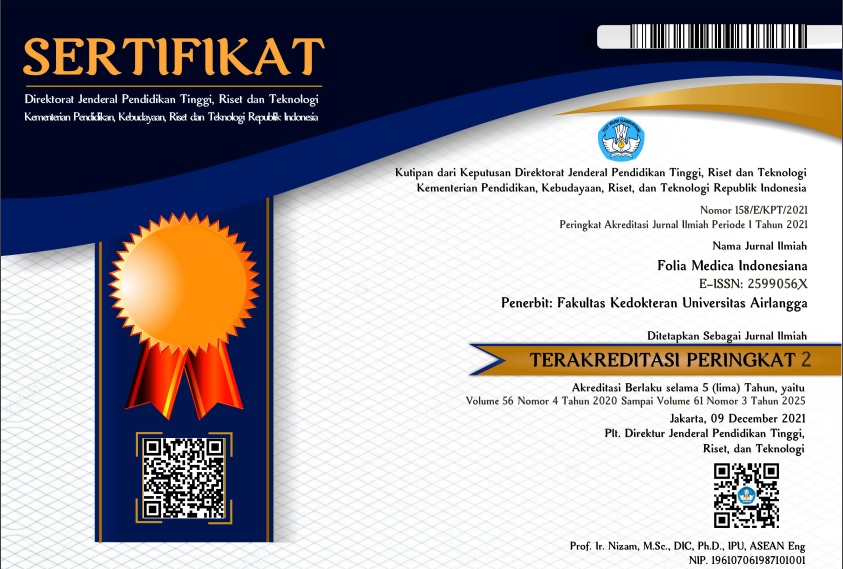ORCID ID
Yan Efrata Sembiring: https://orcid.org/0000-0002-1712-1816
Abstract
A total correction is a preferred treatment for Tetralogy of Fallot patients in every part of the world. However, the mortality in developing countries was as high as 6.9% to 15.3%. This was a retrospective analytic study that analyzed pre and post-operative risk factors that affected mortality on TOF patients that were performed total correction in Indonesia. A total of 47 TOF patients that were performed total correction from January 2016 to September 2019 were enrolled in this study based on the inclusion criteria. Preoperative and post-operative data were obtained from medical records. In this research, the majority of mortality was found in male patients (39.3%), while the female's rate was lower (36.8%). Overall mortality was 38.3% and one operative death was found. The average age of patients was 84.12 months (12-210 months), whereas the average height (85.56 ± 36.17cm vs. 112.93 ± 21.73) and weight (17.22kg vs. 28.21kg) were lower for mortality patients. Some significant preoperative variables were identified as mortality risk factors such as: age below 60 months (p=0.047), smaller weight and height (p=0.008; p=0.002), abnormal hematocrit (p=0.002), and oxygen saturation below 75% (p=0.018). Significant post-operative risk factors included: temperature above 38.5â°C (p=0.000), and ventilator time of more than 48 hours (p=0.033). In conclusion, the mortality of TOF patients undergoing a total correction in developing countries was quite high. It was associated with some risk factors, such as younger age, lower weight and height, low oxygen saturation, post-operative fever, and prolonged ventilator time.
Keywords
Tetralogy of Fallot, Total Correction, Mortality, Risk Factors
First Page
151
Last Page
157
DOI
10.20473/fmi.v57i2.22107
Publication Date
6-1-2021
Recommended Citation
Juliana, Juliana; Sembiring, Yan Efrata; Rahman, Mahrus Abdur; and Soebroto, Heroe
(2021)
"Mortality Risk Factors in Tetralogy of Fallot Patients Undergoing Total Correction,"
Folia Medica Indonesiana: Vol. 57:
No.
2, Article 12.
DOI: 10.20473/fmi.v57i2.22107
Available at:
https://scholarly.unair.ac.id/fk-fmi/vol57/iss2/12






